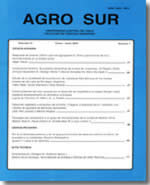Ecological analysis of "Mallines" of the provincial Park Copahue, Neuquen, Argentina
Main Article Content
Abstract
In the Caviahue-Copahue region, in northwestern Neuquén, the "mallines" constitute the grazing fields during summer season. These pratense communities develop on poorly drained volcanic soils, located in concave areas over outwash plain and/or fluvial terraces. This "mallines" fisonomy is similar to a humid meadow , always green, dense and with abundant Juncacea and Poacea. Despite the extension they occupy, they have been comparatively less studied and their features are hardly known.
This paper shows the results of the theoretical analysis, based on air photography, topographic, edafic and vegetation wetlands characteristics. Edafologic, floristic and group descriptions were made. From the analyzed system, it can be concluded that the structure of the present vegetation communities evidence different areas where, from an irregular border, follow a hidromorphic gradient conditioned by the topography and soil characteristics.

